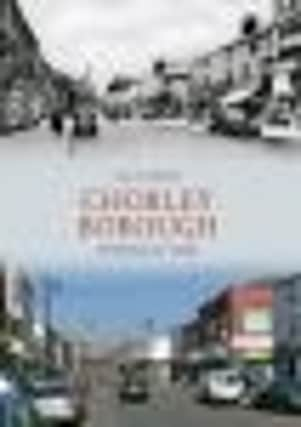Book review: Chorley Borough Through Time by Jack Smith


If evidence was needed of the demise of the town’s heritage, look no further than Chorley industrial historian Jack Smith’s remarkable book which, picture by picture, takes us through almost 100 years of history.
By juxtaposing old and new images of streets, buildings and people, Smith helps readers to consider the effects of modern development on what is often regarded as a typical English town.
Advertisement
Hide AdAdvertisement
Hide AdThe Industrial Revolution brought growth and prosperity to the town whose landmark moorland hill, Healey Nab, was occupied way back in prehistoric times and may also have been used by the Romans.
During the 19th century, there was work aplenty in the cotton mills, coal pits and iron foundries while the newly-built canals and railways enabled goods to be transported far and wide.
In the 1930s, Chorley became home to the largest Royal Ordnance filling factory in the country with its opening by King George VI proving to be a grand occasion for the proud townsfolk.
But over the last 50 years, much of Chorley’s heritage has been demolished or obliterated by development, mainly for housing and roads.
Advertisement
Hide AdAdvertisement
Hide AdBagganley Hall, a 17th century manor house with historic associations to the town, was demolished to make way for the M61 motorway in 1969, along with a splendid railway viaduct of eight arches over the canal at Botany, and the unique 16 stone arches built at Hartwood rail cutting in 1843 were removed in 2009 with a so far unfulfilled pledge to return them within two years.
A huge amount of housing development has taken place on green land, and the surrounding countryside is no longer as accessible. Ribbon housing along the roads is commonplace, garden spaces have been sold for house plots and ancient timber-framed houses and cotton mills with unusual architecture and decoration have been pulled down.
In fact, Smith reveals that he has witnessed the demise of almost every mill in the borough over the past 30 years, including the last working mill, Lawrence’s, which was closed and demolished last year.
Even the town’s motto, an integral part of Chorley’s heraldic Coat of Arms which itself dates back to the 13th century, was not safe from those eager to ‘update.’ Thus ‘Beware’ became ‘Be Aware’ courtesy of members of the 21st century town council.
Advertisement
Hide AdAdvertisement
Hide AdFortunately, notes Smith, Chorley has many ‘goods’ along with the ‘bads.’ There is a new country park at the scenic Yarrow Valley and a 150ft mill chimney has been saved from extinction to be used as part of a Morrison’s supermarket.
The town’s famous markets have seen investment and improvements, the pedestrianised streets have made shopping a more pleasant experience and a new bus and railway interchange is far more user friendly.
Among the many fascinating photographs reproduced here is the famous ‘Big Lamp’ at the junction of Market Street, Bolton Street and Pall Mall which was a popular meeting place for townsfolk. The lamp was removed amidst a great outcry in the late 1940s and later replaced by a new one, far less impressive than the old decorated cast-iron post.
An image of the Cattle Market, or Flat Iron as it is known today, taken in 1873 demonstrates very clearly that it was indeed a bustling centre for local animal traders and another picture reveals the huge extent of the former Birkacre bleachworks, a mill demolished in the 1930s.
Advertisement
Hide AdAdvertisement
Hide AdSt Mary’s Church, which still stands today on Mount Pleasant, has an eight-peal bell tower which was erected in 1894 and stands 130ft tall. Originally the bells were hung too high and caused the tower to move so much that they had to be lowered by several feet!
A 1928 photograph shows long-distance walker and Chorley postman Bob Bridges sporting an impressive moustache and hat as he competes in the Manchester to Blackpool Walking Race. During the post First World War years and 1920s, he became the British Walking Champion.
Another of the town’s famous characters was Mr Testo Santé, a theatrical entrepreneur and showman who settled in Chorley in the late 19th century and built a skating facility and variety venue which later became the Pavilion cinema. He also built a wooden theatre on the Flat Iron market which was dramatically destroyed by fire in 1914.
Smith’s nostalgic book is full of Chorley’s rich history and provides a wonderful trip down memory lane for local folk and a sobering reflection on the many ways development can so utterly change the face of an old English town.
(Amberley, paperback, £14.99)